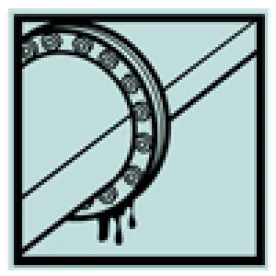On Oct. 13, the Pipeline and Hazardous Materials Safety Administration (PHMSA) published a proposed rule governing liquid pipeline safety, 49 CFR Part 195. According to PHMSA, the proposed rule was prompted by recent hazardous liquid pipeline accidents. The resulting National Transportation Safety Board (NTSB) reports recommended the need to revise and update hazardous liquid pipeline regulations. Similarly, the Government Accounting Office issued a 2012 recommendation concerning hazardous liquid and gas gathering pipelines.
Based upon these calls for increased pipeline safety, the proposed rule first expands reporting requirements to all liquid gravity and gathering pipelines. Gravity lines are currently exempt from PHMSA regulations. PHMSA estimates that at most five operators will be affected by a new requirement to submit annual safety-related condition and incident reports. A more significant impact on pipeline operators is expected to result from PHMSA’s proposal to extend annual reporting requirements to all liquid gathering lines (whether onshore, offshore, regulated or unregulated).
The proposed rule also requires inspections of pipelines in areas affected by extreme weather, natural disasters, and other similar events. The rule would require inspections within 72 hours of an extreme weather event. Operators would be required to inspect all potentially affected pipeline facilities for any conditions that could adversely affect the safety of the pipeline. If any adverse condition is found, the operator is required to take remedial action such as reducing operating pressure, shutting down the pipeline, modifying or repairing the damage, preventing access, performing patrols and notifying affected communities.
In addition, the proposed rule extends the obligation to complete ten-year inline inspection assessments (ILI) to hazardous liquid pipelines located outside of High Consequence Areas (HCAs). Although HCAs were already covered under the Integrity Management (IM) program, the expanded requirements would include periodic assessment and anomaly correction, implementation of risk-control measures such as enhanced damage prevention programs, reduced inspection intervals, corrosion control program improvements, leak detection system enhancements and installation of emergency flow restricting devices.
In addition to ILI assessments, PHMSA proposes changing the non-IM repair criteria as follows:
- Categorize bottom-side dents with stress risers as immediate repair conditions;
- Require immediate repairs whenever the calculated burst pressure is less than 1.1 times maximum operating pressure;
- Eliminate the 60-day and 180-day repair categories and establish a new consolidated 270-day repair category; and
- Establish an 18-month repair category for hazardous liquid pipelines not subject to IM requirements.
- PHMSA also proposes extending the use of leak detection systems on hazardous liquid pipelines in all locations, not just HCAs. The rule further proposes requiring leak detection systems for all new hazardous liquid pipelines, including gathering lines. PHMSA would require that operators perform evaluations to determine what kinds of systems must be installed to protect the public, property, and the environment.
Finally, the rule would require that all pipelines subject to the IM requirements be capable of accommodating inline inspection tools (or “smart pigs”) within 20 years unless prohibited by the basic construction of the pipeline. Operators will be allowed to petition PHMSA for a finding that variables, such as the terrain or location of the pipeline or an emergency, would not permit the accommodation of the smart pig inline inspection tool.
PHMSA estimates annual compliance costs ranging from $1,000 to $16.7 million, with aggregate costs of approximately $22.4 million. The deadline for submitting comments to the proposed rule is Jan. 8, 2016.





 />i
/>i

